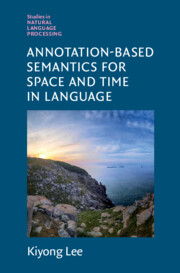Book contents
- Frontmatter
- Dedication
- Contents
- Foreword by James Pustejovsky
- Preface
- Acknowledgements
- Part I Fundamentals
- 1 What Is a Semantic Annotation?
- 2 Data Segmentation
- 3 Modeling a Semantic Annotation Scheme
- 4 Representation and Serialization
- 5 What Does Semantics Do for Annotation?
- 6 Annotation-Based Semantics
- Part II Time and Events
- Part III Motion, Space, and Time
- References
- Index
6 - Annotation-Based Semantics
from Part I - Fundamentals
Published online by Cambridge University Press: 05 August 2023
- Frontmatter
- Dedication
- Contents
- Foreword by James Pustejovsky
- Preface
- Acknowledgements
- Part I Fundamentals
- 1 What Is a Semantic Annotation?
- 2 Data Segmentation
- 3 Modeling a Semantic Annotation Scheme
- 4 Representation and Serialization
- 5 What Does Semantics Do for Annotation?
- 6 Annotation-Based Semantics
- Part II Time and Events
- Part III Motion, Space, and Time
- References
- Index
Summary
This chapter formulates an annotation-based semantics (ABS) for the annotation and interpretation of temporal and spatial information in language. It consists of two modules, one for representation and another for interpretation. The representation module consists of a type-theoretic first-order logic with a small set of merge operators. The theory of types is based on the extended list of basic types, which treats eventualities and points of time and space as basic types besides the two basic types e for entities and t for truth-values. These types extend the Neo-Davidsonian semantics to all types of objects including paths and vectors (trajectories) triggered by motions. The merge operators in ABS allow the compositional process of combining the semantic representation of base structures into that of the link structures that combine them without depending on complex lambda operations. ABS adopts shallow semantics to represent complex structures of eventuality or quantificaiton with simple logical predicates defined as part of admissible interpretation models.
Information
- Type
- Chapter
- Information
- Annotation-Based Semantics for Space and Time in Language , pp. 142 - 180Publisher: Cambridge University PressPrint publication year: 2023
